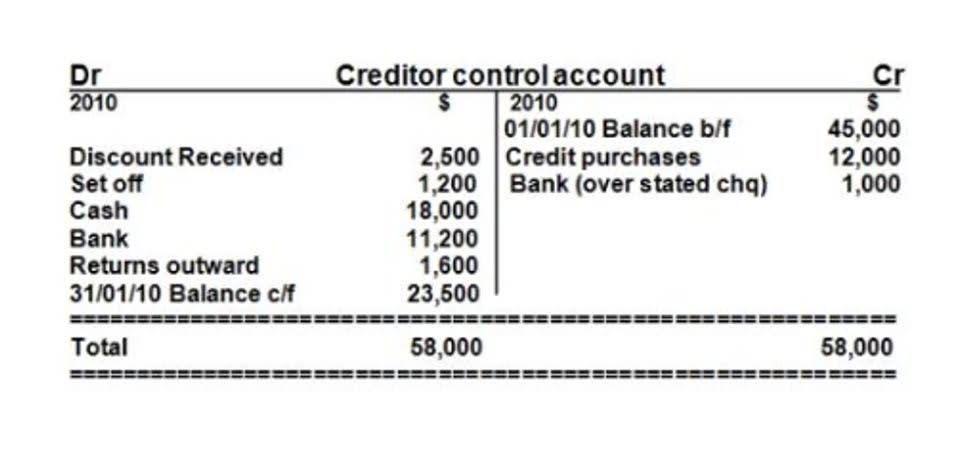
The quick ratio evaluates a business’s ability to settle short-term debts using the most liquid assets. Its ability to demonstrate instant liquidity without depending on inventory sales makes it significant. Note that long-term debts https://shop.techswitchcf.com/accountants-are-among-the-most-sought-after/ and loans are not considered when calculating current liabilities. However, any principal and interest payments that fall within the next year are counted.
- If NWC is positive, you have enough to cover your liabilities and can save for future investments.
- For example, if a company has $1 million in cash from retained earnings and invests it all at once, it might not have enough current assets to cover its current liabilities.
- If a payment isn’t time-critical and won’t impact operations immediately, then these may be able to be pushed back to a later date to increase the working net capital.
- Note, only the operating current assets and operating current liabilities are highlighted in the screenshot, which we’ll soon elaborate on.
- Subtract the latter from the former to create a final total for net working capital.
Accounts Payable Solutions
Many financial websites also provide access to financial statements and other financial data for publicly traded companies. You simply need to find the difference between the working capital for this year and the working capital of the previous year. Alternatively, you can calculate the difference between the assets and liabilities nwc formula from the previous year and the current year. The difference in liabilities can be subtracted from the difference in assets. The excessive stock of products is a liability more than it is a profit-turning device.
What Is Net Working Capital: How to Calculate & NWC Formula
The net working capital calculation is an essential financial metric used to measure the Accounting for Marketing Agencies deviation or divergence between an entity’s current assets and current liabilities. Every business enterprise extensively uses this metric to understand the economic or financial condition of the enterprise. A positive calculation shows creditors and investors that the company is able to generate enough from operations to pay for its current obligations with current assets. A large positive measurement could also mean that the business has available capital to expand rapidly without taking on new, additional debt or investors. If a company can’t meet its current obligations with current assets, it will be forced to use it’s long-term assets, or income producing assets, to pay off its current obligations.

What is Changes in Net Working Capital?
Since we’re measuring the increase (or decrease) in free cash flow, i.e. across two periods, the “Change in Net Working Capital” is the right metric to calculate here. If you are looking for a private company’s financial statement, it can be harder to find, as they are not required to file their financial statements publicly. In this case, you may need to contact the company directly or seek out a financial professional who has access to the company’s financial data. If you are running short on net working capital, it doesn’t have to stop you from growing your business. Our collateral-free loans offer fast approvals, minimal documentation, and tailored solutions for growing businesses.

You can also use another formula to calculate your company’s net working capital. A company with declining NWC may find itself facing stricter loan covenants, higher interest rates, or reduced credit availability as lenders protect against perceived increases in risk. Working Capital, Net Working Capital’s ‘fraternal twin’ is the more well-known measurement in the finance world. Finance professionals often use these terms interchangeably, which can create confusion when precision matters.
- The businesses that truly understand their working capital requirements calibrate their targets based on operational realities, not arbitrary benchmarks.
- Imagine Green Valley Grocers has $500,000 in current assets (cash, inventory, and accounts receivable) and $300,000 in current liabilities (accounts payable and short-term loans).
- Liquidity measures such as the quick ratio and the working capital ratio can help a company with its short-term asset management.
- Once a business is clear on what its short-term assets and liabilities are, calculating the net working capital is a matter of simple subtraction.
- Any change in the Net Working Capital refers to the difference between the Net Working Capital of two executive accounting periods.
One option is to refinance the short-term debt into a longer-term payment plan. A ratio above two may mean you can invest cash in your business, pay down debt, or distribute it to owners. Run a cash flow projection to confirm this and decide whether you want to keep the cash for safety or invest it for higher profits. The net working capital formula is a rough estimate of whether you will receive enough cash in the next year to pay what you owe in the next year. That’s why it’s used by lenders to determine whether you are financially healthy enough to receive a loan. These include short lifespan and swift transformation into other forms of assets.
Long and short term debts
She can use this extra liquidity to grow the business or branch out into additional apparel niches. Accurate NWC calculations require careful consideration of its components. For example, inventory valuation can vary depending on accounting methods like FIFO (First-In, First-Out) or LIFO (Last-In, First-Out), which directly affect the outcome. Similarly, the timing of accounts receivable collections and accounts payable settlements impacts the calculation. Many companies use financial software to ensure their NWC figures reflect the latest financial data. Accounts receivable days, inventory days, and accounts payable days all rely on sales or cost of goods sold to calculate.

What’s the difference between working capital and operating working capital?
In the near term, you may owe more than what you own, which puts you at risk of having financial problems. Net working capital, also called as working capital, is the financial cushion that keeps your business moving daily. It identifies the difference between all your cash, inventory and receivables (or assets) and the amount of bills, short-term business loans and salaries (liabilities). The NWC definition highlights it as a key metric that shows whether your business has enough short-term assets to cover its short-term obligations. Long-term receivables or a near-exhausted credit line do not count towards your current assets. Neither does an intangible asset, such as office property, or the valuation of factories or warehouse materials.
Cash
If the net working capital figure is zero or more, the company can cater to its current debts. Typically, the greater the net working capital figure is, the business is in a better position to cover its short-term debts. For example, large retailers like Walmart generally don’t worry about this figure since their customers usually pay on the spot.
